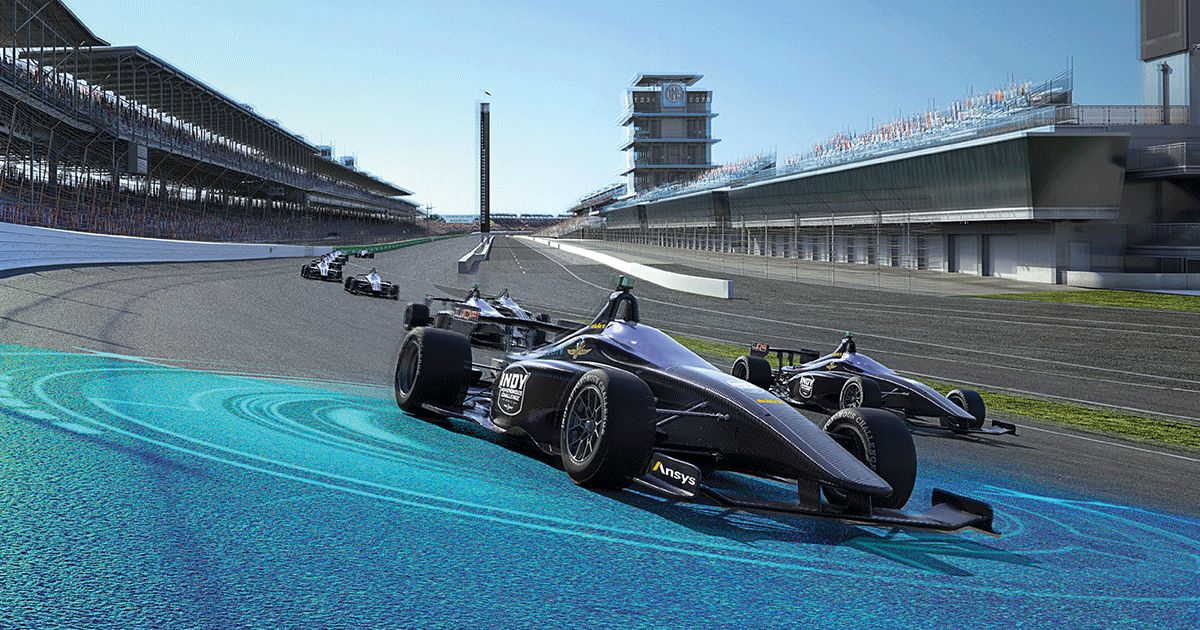INDIANAPOLIS — The annual automotive spectacle known as the Indy 500 is a blur of rubber and metal, as 33 cars speed around the tarmac at 240 mph for as long as five hours straight.
This October, a version of that same high-speed, open-wheel race car format will be run — only without human drivers.
Announced at the Indianapolis Motor Speedway Monday during the Consumer Electronics Show, the Indy Autonomous Challenge will pit 30 university teams against one another to remotely race full-size, and fully-powered, Indy cars for 20 laps. The first team to reach the finish line goes home with $1 million.
“If we can go 240 miles per hour without colliding, surely we can make highway traffic safer,” said Mark Miles, president and chief executive of Penske Entertainment Corp., which owns the IndyCar Series and the Indianapolis Motor Speedway — where the Indy Autonomous Challenge will take place.
The Indy 500 is one of the most challenging motorsport series on the planet, pushing the limits of car and driver for 500 grueling miles. The autonomous version could be just as high stakes, pushing competing teams to develop software that is most adept at interpreting data from the cars’ sensors to make split-second decisions that are typically made by a human.
“At IndyCar, we believe the future lies in connectivity and data, in powering competition and the fan experience,” Miles said. “Competition and connectivity empower data and discovery. Race car drivers are fundamental to our sport and always will be, but the Indy Autonomous Challenge competition will help us improve our series and maintain our edge.”
The Indianapolis Motor Speedway has a history of testing new technology, starting in 1909 with hot air balloon racing, followed by motorcycle racing, and eventually the vehicles for which it’s known today: race cars.
The Indy Autonomous Challenge is “racing but in a futuristic way,” said Doug Boles, president of Indianapolis Motor Speedway, which will host the race October 23. “We’ve known for years that prized competition can drive innovation.”
October’s race was inspired by the DARPA autonomous challenge of 2005, which saw 196 teams competing to drive a car 140 miles without a person inside. Just five teams completed the race within the allotted time.
"What the DARPA grand challenge documented was that robots could drive themselves in very confined environments," said Sebastian Thrun, winner of the DARPA challenge and co-founder of the personal electric aircraft maker Kitty Hawk. "Still, today the difference between what a trained human race driver can do and what AVs can do is a huge gap
"The Indy Autonomous Challenge is a challenge to drive as safely as human drivers,” he continued. “These robots have to have an intelligence that lets them predict in advance what can happen. You have to worry what others are doing, not just about your own dynamics, and do it really fast. This is a new challenge for the self-driving car community.”
About 500 students representing 30 university teams have signed up to compete. Colorado State University, Clemson University, the University of Pittsburgh, Auburn University, and the University of Virginia are among the U.S. teams representing 14 states and 11 countries that will race this year using an autonomous race car chassis developed by the same company that makes the sole race car for the Indy series: Dallara USA.
As one student quipped during Monday’s announcement, “the more risky vehicle may win, but the most risky vehicle might be the one that crashes in mile one.”
The cars in the Indy Autonomous Challenge may not have drivers behind the wheel, but the teams operating them will still "need to show their bravery," said Stefano dePonti, chief executive and general manager of Dallara USA. "This is a unique project. The unknown elements outnumber the known and knowledge elements. Bravery, as well as know-how, are the two elements that will make a car a winner."






